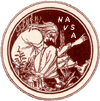Bram Stoker Centenary Conference 2012:
Bram Stoker and Gothic Transformations
Derwent Building, University of Hull and Whitby, North Yorkshire
Organised by the University of Hull
12-14 April 2012
Keynote Speakers: Prof Sir Christopher Frayling, Professor Clive Bloom, Professor Luke Gibbons, and a special presentation by Professor Elizabeth Miller and Dacre Stoker
"My revenge has just begun! I spread it over centuries and time is on my side." (Dracula, 1897)
Count Dracula's declaration from Bram Stoker's iconic 1897 vampire novel is, in many ways, descriptive of the Gothic genre. Like the shape-shifting Transylvanian Count, the Gothic encompasses and has manifested itself in many forms since its emergence in 1764 with the publication of Horace Walpole's The Castle of Otranto. Its revenge has just begun. It has spread over centuries and time is on its side.
When Stoker wrote Dracula the genre was well over a hundred years old but the novel marks a key moment in the evolution of the Gothic - the text harks back to early Gothic's preoccupation with the supernatural, decayed aristocracy and incarceration in gloomy castles in foreign locales. Dracula speaks to its own time but also transforms the genre - a revitalization that continues to sustain the Gothic today.
On the eve of the centenary of Stoker's death, which occurred in April 1912, the University of Hull's Department of English and School of Arts and New Media, in association with the Centre for Victorian Studies, will host a three-day international conference, Bram Stoker and Gothic Transformations. The conference will take place at the Hull Campus of the University and in Whitby.
In Dracula Mina describes Whitby as a "lovely place" but it soon becomes a site of horror, when Dracula lands from the Demeter in the form of a dog to make his first appearance on English soil. At Whitby Abbey, Lucy becomes the Count's first English vampire bride.
The conference is interested in the iconic significance of Stoker's vampire novel and seeks to reappraise Stoker's work within its fin-de-siècle cultural climate. It is also interested in exploring the broader context of the changing nature of Gothic productions from the late eighteenth century to the present. Using Dracula as a key point in the evolution of the genre, it seeks to explore the novel's Gothic predecessors and influences, and the manner in which Stoker's work renewed the Gothic for future generations.
How do the Gothic's early themes of despotic rulers and fathers, grim prophecies, supernatural embodiments, incarceration, labyrinthine passages and corridors, threatened females, and sexual deviancy transform in subsequent cultural outputs from novels, theatre, films, television and computer games? How has the Gothic in its modern manifestations and variations sustained itself into a fourth century?
"At once escapist and conformist," Clive Bloom argues, "the Gothic speaks to the dark side of domestic fiction: erotic, violent, perverse, bizarre and obsessionally connected with contemporary fears." How does the new Gothic of the twenty-first century engage in fantasy and fear?
The organising committee welcomes abstracts of 250-300 words for a 20 minute paper. Please send your abstract by email to Dr Catherine Wynne, University of Hull, UK (c.wynne@hull.ac.uk) by 15 May 2011.
Topics may include, but are not restricted to, the following areas:
- Stoker's work in its social, political and cultural context
- The development of the Gothic from Otranto to the twenty-first century
- Stoker's influence on the genre
- Irish and British Gothic
- Gothic theatre and drama
- Gothic visualities
- Gothic technologies
- Gothic bodies
- Gothic monstrosities
- Gothic sexualities
- Gothic psychologies
- Gothic narratives
- Gothic Intertextualities
- Gothic places and spaces
- Hauntings and spectrality
- Criminality and the Gothic
- Science and the Gothic
- Reincarnations of Dracula
- Vampirism and the 'Young Vampires' of the twenty-first century
- Anti-Gothic, Gothic Parody, Comic Gothic




